







JAISINGHANI, ZOMBIE-IN-CHIEF











JAISINGHANI, ZOMBIE-IN-CHIEF


Masthead
Volume CXXIII No. 8
Executive Board
ZOMBIE-IN-CHIEF..........................JIYA JAISINGHANI ‘27
CANDY MANAGER.......................................FIONA SHI ‘27
SPOOKY STORY EDITOR.......................TIANNA SPITZ ‘27
COSTUME DESIGNER......................EILIYAH SAROWAR ‘28
GHOUL CATCHERR...............................TANYA AVADIA ‘25
SPOOKY FILM MANAGER...............CHARMY KOTADIA ‘27
GRAVEYARD MANAGER. ...........JOSEPHINE CHOONG ‘28
Editorial Board
POTION EDITOR.............................. SERENA PANUCCI ‘28
SKELETON EDITOR............................RIYANA PHADKE ‘27
GHOST EDITOR........................................ITAI GELLER ‘26
BAT EDITOR......................................CAMRYN WINANT ‘28
ZOMBIE EDITOR ..............................PRISHA VAGVALA ‘28
TOMBSTONE EDITOR..........................TASHA KHOSLA ‘25
Operations Board
HEAD GHOSTBUSTER.............ISABELLE VILLANUEVA ‘26
GRAVEYARD KEEPER...........................ISABELLA ZIV ‘25
PHANTOM COURIER............................JONATHAN LAI ‘28
LAYOUT ZOMBIE.....................................SHREYA ROY ‘27
LAYOUT ZOMBIE.............................BRADY SANSOTTA ‘29
Boo Crew
Jeylan Jubran
Claire Deans
Aracely Candelaria
Sean Palermo
Josh Bodenstein
Vincent Olivieri
Maya Meents
Atreyee Halder
Misayo Idowu
Robert Dietrich
Abigail Thomas Milagros Carbajal
Vedhesh A. Kamaraj
Breona Pizzuta
Christina Thomas
Viktor Palmer
Disha Rana
Samue Strassburger
Isabelle Gabay
Dominc Souza
Chris Kalish
Sydney Leung
Kailey Supan
Rachel Choi
Gavin
Ruby
Wesley Yu
A MISTAKE?
Email us at eboard@thestute.com.
All opinions and editorials reflect the views of their respective author(s). No Part of The Stute may be reproduced in any form, in whole or in part, without the written consent of the Editor-in-Chief. Cited references of The Stute are permitted.
All members of the Stevens community are able to submit a Letter to the Editor to be published in The Stute. Letters must refer either to a piece published in The Stute or to The Stute in general and must be between 400 – 800 words in length. Submit letters to editor@thestute.com with your name and title (when applicable) or using our Google form. For writers who wish to write a Letter to the Editor anonymously, please see our policy on anonymity.
The Editorial Board reserves the right to choose whether or not to publish a submitted Letter to the Editor based on a majority rule vote, and additionally reserves the right to edit letters for clarity or request authors to revise. Provided that the author approves the final version, The Stute reserves the right to edit letters according to our copy editing procedures, defined in our policies.
All members of the Stevens community are able to submit a standalone opinion piece (otherwise known as an Op-Ed) to be published in The Stute. Op-Eds must be between 400 – 800 words, but longer submissions will be considered on a case-by-case basis. To submit an Op-Ed please email eboard@thestute.com with your name and title (when applicable) or using our Google form (tinyurl.com/submit-t0-stute). For writers who wish to write an OpEd anonymously, please see our policy on anonymity.
The Editorial Board reserves the right to choose whether or not to publish a submitted Op-Ed based on a majority rule vote, and additionally reserves the right to edit Op-Eds for clarity or request authors to revise. Provided that the author approves the final version, The Stute reserves the right to edit Op-Eds according to our copy editing procedures, defined in our policies.

BY JEYLAN JUBRAN, GHOST WRITER
Midterms are over. The halls are quiet. The smell of burnt coffee and despair still lingers in the air. Somewhere, a printer is jammed, and no one is brave enough to fix it.
They say Stevens has no ghosts… but I swear I’ve seen the souls of students still wandering around Babbio muttering, “what was the answer to question four?”
Midterm season isn’t just a week — it’s a haunting.
You start the week thinking, “It can’t be that bad.”
By Wednesday, you’re on your sixth Celsius, your laptop
fan sounds like a jet engine, and you’re hearing phantom Canvas notifications.
And somehow, every professor made a blood pact to schedule their exams in the same five days. As if the rest of the semester doesn’t exist.
Then there’s The Math Professor™, the one who decided the “one-week break between math sections” was merely a suggestion. Instead, we got a week of illegal lecturing that was “optional”… but also mandatory to make up if you didn’t attend. Sir, what? No pause. No breath. Just…madness.
Office hours turned into therapy sessions. Group chats became digital séance circles:
“Does anyone have the answer key?”
“No, but I have trauma.”
There were whispers of students pulling all-nighters in the library basement. No one knows if they ever left.
But now, as the dust settles, we crawl out of our study caves blinking at the sunlight. The midterms are dead. We survived.
Yet deep down, a question remains…
We survived midterms—but at what cost?
(Probably our GPA. Definitely our sleep schedule. Maybe our soul).
PREFERABLY THE ONE ON TOP OF THE HANGING LIGHT

BY CLAIRE DEANS, GHOST WRITER
Every major has something specific they are known for, and during Halloween season, the best way to show that off is through on-theme costumes. Here is a culmination of just a few majors’ costumes in no particular order.
1. Undecided: If you are undecided, you have not even figured out what your costume is, exactly. You are so torn among so many different things that at this point, you are just praying that someone will tell you who you are in a group costume.
2. Biology: If you are a Biology major, chances are you are a skeleton. Knowing every part of the body and being well acquainted with anatomy, you will absolutely be walking around quizzing people on what the name of each bone is, and making fun of them when they get it wrong.
3. Humanities: If you are a Humanities major, you are definitely the one orchestrating the group costume. You have been planning this for months and already have a Pinterest board with each idea perfectly laid out.
4. Business: If you are a Business major, you are probably dressing up as your favorite sports team. Anyone from an opposing team is immediately your enemy. You will very likely sit there and argue
the logistics of your team and their overall value with them.
5. Electrical Engineering: ‘Double E’ majors are probably showing up as a Charlie Brown’s ghost, as they were too tired to find anything more than a top sheet to throw over them.
6. Environmental Engi neering: Your costume is ab solutely thrifted or will be re used for the sake of the planet. You will likely be some form of forest animal with doe eyes.
7. Chemistry: Chemistry major, you are very likely some form of scientist. Whether you dress up as a love doctor or a mad scientist, you cannot get away from your Erlenmeyer flask and lab coat.
8. Physics: As a Physics major, you are probably dressing up as any of the following three: Robert Oppenheimer, Albert Einstein, or Sheldon Cooper. At least one of these iconic images in the physics world will be there, or maybe you’re just the doppler effect like Sheldon.
9. Computer Science: You’re showing up to the party as either a robot or some form of CIA operative. You definitely have an earpiece in with some really dark shades.
10. Mechanical Engineering: If you are at all interested in the automotive side of things, you are hands down somebody related to F1. My personal pick would be Max Verstappen, but maybe that’s just because of the song. Now, many of these could be completely wrong, but I hope you enjoyed what I believe each major would be for Halloween. If there’s anything that you think we missed, be sure to let us know! Happy Halloween!

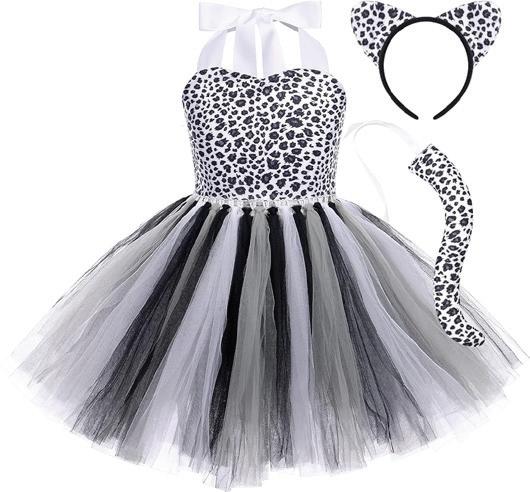

BY JEYLAN JUBRAN, GHOST WRITER
Every freshman at Stevens hears the same whispered warning during their first semester:
“Don’t anger the Torch Bearer.”
At first, it sounds like a joke — another harmless Stevens tradition, like complaining about the dining hall or pretending you understand thermodynamics. But then someone mentions
BY TASHA KHOSLA, TOMBSTONE EDITOR
Being a student at Stevens is scary enough with the overwhelming Canvas notifications, mystery dining hall food, and horrific group projects — but campus has just gotten a lot scarier. Beginning the week of Halloween, reports came flooding in from campus residents, detailing missing staff and RAs, strange sounds, mysterious floods, and more. Reporters from The Stute decided to investigate these strange events, hoping to piece together how all of this was connected.
In an interview with The Stute, one resident noted, “I noticed all of the geese, you know the ones that lurk near Palmer, were acting differently. Their eyes were glowing red and they kept chasing after anyone entering and leaving the dorms. Even the rabbits on campus were being weird. I usually see them
the ritual. The one no one talks about in official tours, the one passed down through panicked group chats and late-night dorm whispers.
If you slap the Torch Bearer’s butt, you get good luck
If you don’t… Well, let’s just say the semester won’t be kind to you.
According to legend, the statue’s glow isn’t from the torch — it’s from the souls of students who failed to show their “re-
chilling in the grass at night but now their eyes are also all red and they actively try to prevent us from getting into our dorms.”
Another resident recalled, “In Jonas, the basement started flooding, which really sucks for everyone who lives there. Around the time that happened, I was in the elevator and it lurched to a stop before it even reached my floor. Everything went dark for a moment. I heard faint whispers chanting something, and suddenly, the walls started closing in. I repeatedly slammed the ‘door open’ button and managed to escape but since then, the elevator has been out of service.”
Other residents from across all of the freshman dorms shared similar stories of hearing voices in the halls, seeing the laundry rooms flood, animals, particularly mice and lanternflies, acting strangely, and other bizarre occurrences such as roommates suddenly disappearing and keys


spect.” They say the first student who forgot the ritual failed every exam, lost their DuckCard, and had their 3D print jam at 99%.
Another supposedly got stuck in the Babbio elevators for three hours… on a Monday morning. Some upperclassmen claim the curse began decades ago, when a group of overconfident freshmen mocked the statue. The next day, half their friend group mysteriously transferred to NJIT. The rest? They were nev-
going missing.
Disturbed by these accounts, reporters decided to visit the UCC towers — the on-campus housing with the most reports of supernatural happenings. Curiously, tower residents reported being unable to enter the building and many noticed their DuckCards had completely vanished without a trace. One resident observed, “The turnstiles open for no one. Whenever we do see them open, there’s no one there! We hear the familiar ‘ding’ and the whir of the motors, but can’t see anyone actually going through. We’ve just been hopping the turnstiles instead — don’t tell RDS.”
Additional paranormal activity plaguing the towers was concentrated on the third floor. The bridge was obscured by a thick, spooky mist and within the mist, unfamiliar voices could be heard, urging students to leave and never return. Residents of the entire third floor were re -

er seen in Pierce again. Over time, the ritual became a weird form of “freshman hazing.” You’d see a group of students creeping toward the statue at midnight, one brave soul whispering, “For good grades,” before smacking the bronze behind and running for their lives.
Of course, the administration denies everything. “There is no such superstition,” one official said (while subtly side-eyeing the statue). But every year, during
ported missing, and students on the remaining floors feared they could be next. Naturally, the third floor was where our brave reporters decided to go after sneaking into the building.
Joined by residents tired of living in fear, the reporters cautiously walked across the bridge, hoping to find clues to solve this mystery. Using flashlights to cut through the fog, this group of students found old newspaper clippings, clothing that seemed like it was from decades ago, and piles of old Stevens memorabilia around the bridge. As the group sifted through the items, voices called out, warning them to cease their searches and leave before it was too late. Undeterred, they plowed through the items, trying to uncover what was behind these dorm horrors.
Suddenly, a group of ghostly figures appeared in the mist.
“LEAVE NOW,” they bellowed.
One resident retorted, “Who are you and why are you doing







midterms, someone swears they hear metallic footsteps echoing near Howe. The sound of a bronze figure … walking.
So if you’re new here, take this as your warning. When you pass the Torch Bearer, don’t look too long into its hollow eyes. Don’t study nearby after midnight. And whatever you do — Don’t forget the slap
Because at Stevens, luck doesn’t come free … it demands tribute.
this?”
One of the ghosts explained, “We were all students at Stevens once. But our dorms were never as nice as these. We didn’t get to live in nice buildings or a fancy tower full of lounges with Manhattan views. Since you’re also so ungrateful, we figured we’d steal your keys and DuckCards and control this campus.”
“Didn’t some of you literally live on a boat? Is that not a cool dorm!?”
“It didn’t last very long, and we want the dorms on land.”
“These are our dorms, not yours! We miss our friends and want them back. You can’t get away with this!”
“We already have.”
Before any further action could be taken, the ghosts drove everyone out of the building. While The Stute was able to solve this mystery, it is now up to the rest of Stevens to figure out how to fight back and end these dorm horrors.
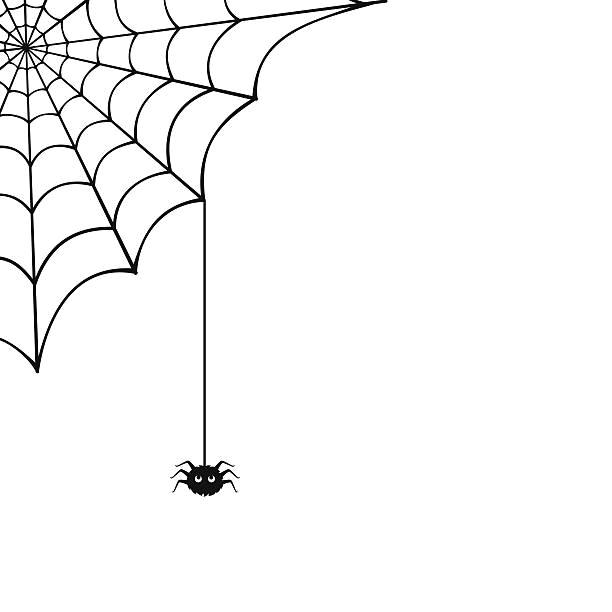






BY SEAN PALERMO, FRIGHT WRITER
To the average passerby, Hoboken may appear to be an innocent little city, but the Halloween season beckons the creepy stories that convey the spirits that reside within it. Be it Arthur’s Tavern, The Brass Rail, or Sybil’s Cave, ghosts of Hoboken’s past get the spotlight once again as their stories are once again brought upon us for this spooky season.
Our first ghostly spirits trace to Arthur’s Tavern — a building approached by the founder of New Jersey Paranormal Research, John Cifarelli, to investigate reports of otherworldly events caught by employees, such as footsteps, lights flickering, doors opening on their own, a clipboard flying off a desk, whispering, and someone’s hair being pulled. Along with his investigation came parapsychologists who joined the search to come away shaken — certain that the women’s bathroom of the Tavern was undoubtedly haunted.
Beyond Arthur’s Tavern, another establishment, The Brass Rail, also appears to be riddled with its own ghostly presences. It is alleged that the building is haunted by a bride and groom who had died
there over 100 years ago. As their story goes, there was a wedding held in 1904 that occurred just like any other before the bride tragically tripped on the stairs at the top of the second floor and died after her neck had broken by the end of the fall. In dismay, the husband reportedly drank quite considerably before eventually leaving a suicide note reading, “Now that my wife was taken from me, there is no reason for me to live,” hanging himself after his last drink by the staircase. Nowadays, waiters and waitresses cleaning in the thick of the night report seeing the bride and groom walking down the stairs where they both perished. Cifarelli reports that the owner of the restaurant, at the time of the investigation in 2007, firmly believed in the haunted nature of the building due to photographs and equipment revealing a presence “not of this world.”
Perhaps no other more wellknown tragic tale of haunted landmarks exists than that of Mary Rogers, dating back in 1841 when her missing body was discovered washed up on Hoboken shores near Sybil’s cave. Rogers was a 20-yearold who ran a boarding house at the New York City hall located on Nassau Street and
Who will survive?
BY ARACELY CANDELARIA, PHANTOM WRITER
Happy spooky season, ducks! As we reach the halfway point of the fall semester, it turns out that the true horror students stumble upon isn’t just midterms, but instead it’s group projects!
When a professor assigns a group project, the first thing that runs through most students’ minds is how successful and productive the group will be, along with curiosity of which role they will take on. Once you gather with your peers and it’s time to declare the leader, most people probably wish they would get swallowed into their seat or avoid eye contact because, realistically, a leadership role in a group project isn’t exactly ideal. Unlike other leadership roles in extracurriculars or clubs, your peers are more cooperative and willing to contribute, whereas in a
class project, they are not always motivated or cooperative.
For most of our education throughout our K-12 years, we have had to work on group projects, and it seems that every group has its own cast of characters. Most collaboratively dread the procrastinator; you would think this person would get a thrill from stressing out the rest of the team with their uncertain time schedule to complete their task, or to even complete it at all. Then there’s the invisible member, I suppose they don’t disrupt the work flow but barely contribute, leaving the other members in a side-eye mood due to the lack of urgency and contribution. Finally, our hero, the tech guru, the member who is familiar and knowledgeable with external resources, is considered a leverage among the team, enhancing the project. Horror films are so entertaining not only because of the

worked as a saleswoman in a tobacco shop on Broadway. She was last seen alive by her boyfriend at the time, Daniel Payne, when she had told him that she’d be visiting her aunt uptown — her last recorded moment alive.
Three days later, Roger’s body was found in the Hudson, showing results of strangulation, sexual assault, and blunt force trauma. However, her killer was still unidentified. The story quickly gained immense popularity in the newspapers. Rogers would soon be dubbed the “Beautiful Cigar Girl.” Investigations carried on as her ex-boyfriends and suit ors were charged and brought in for questioning. Tourists be gan flooding into Hoboken to visit Sybil’s cave near where her body had been discovered. Daniel Payne, in particular, was put under immense pressure from the public due to a belief that he was involved with Rog er’s murder due to his close relationship with her, being harassed by many individuals under this notion. Facing this newfound stress, coupled with his grief, Payne committed suicide outside the cave by poisoning himself, leaving be hind a note that read, “To the World Here I am on the very spot. May God forgive me for my misspent life,” which some
took as his confession to the murder (though the case was never officially solved).
The case itself is largely believed to be the inspiration for an at-the-time quite unknown writer Edgar Allen Poe’s with his novel, The Mystery of Marie Roget . Though the story is set on the steps of River Seine, the murder-mystery plot and names seemed to quite significantly reflect the real-life case.
Additionally, The Mystery of Marie Roget would be published in Snowden’s Ladies’ Companion across three installments in November 1842,
ary 1843 — not long after the murder.
All that’s left behind from the extremely bleak event is Sybil’s Cave itself, which was reopened in 2007 after having been closed down in the 1880s due to water quality control. In 2009, the area was excavated and researched by archeological experts who learned more about the site’s interior and determined that the water was not safe to drink, influencing the decision to keep the cave closed to the public with a gate that stands to this day as it remains forever haunted by

jump scares, but also the adrenaline we feel for the characters in movies, listing the characters in our head and sharing our opinions with those close to us about whom we assume will be the first to die and last to survive, such as in Scream, The Texas Chain Saw Massacre, I Know What You Did Last Summer, etc. Notice how these films revolve around a younger age group of typically college students. Let’s transition the students from the group project into a real project — one that involves attempting to escape a haunted asylum.
The lights flicker off, and the night begins. Everyone is gathered together, and all actions moving forward are now declared by the leader. Meanwhile, the procrastinator still has not comprehended that they are in a life threatening situation, treating the night as an assignment to brush off until later. The invisible mem-
ber simply hopes to survive with no plan or execution. Our hero, the tech guru, has a plan alongside the leader to collaborate; after all, two minds are better than one. Wrong. The leader and tech guru get involved in a quarrel due to both being headstrong about their opinions, resulting in the members splitting up from each other. The invisible member just slipped away and simply disappeared, and was never heard of again, although members claim they heard a mumble of distress in the distance, but never found a corpse. The leader has a plan, right? They use their bravery to go check the storage room to attempt to get the electrical box fixed. Good thing they came prepared with a flashlight, pretty resourceful, until they dropped it, and that noise drew the murderer towards their direction, in an attempt to dismiss what just happened. Unfortunately,
the door slammed shut, and they got stabbed right through the door. In the meantime, in the pitch black asylum, the procrastinator’s leg became stuck in the weak floorboard, leaving them with agonizing pain, limping for the remainder of the night. Suspicion grows between the two members. After several hours into the night, the morning is almost near and their escape feels in reach. The tech guru attempts to break the chains of the door with a pair pliers the procrastinator found, just in time to dodge an attack from the killer, but unfortunately, the procrastinator’s fate was sealed by their own injury and an easy kill. The tech guru escaped and jumped into a cab, with relief, but as the car drove away, the driver’s face became visible in the rearview mirror. It’s too late. The murderer strikes and the streets are empty once again.








BY MISAYO IDOWU, PHANTOM WRITER
Putting yourself in the shoes of a hockey player, is there anything more terrifying than being cursed to play in a game that never ends? On October 22, the field hockey team was forced to live through this nightmare, but instead of fear, they showed strength and won the game against DeSales 2-1.
Going into this game, the Ducks were 12-2 for the season, an impressive record. They were also unbeaten in the MAC Freedom conference with a record of 3-0. With a promising season thus far, in addition to being on a three-game win streak, they were looking to continue their winning ways in an away conference game against DeSales.
The first quarter was a thriller despite featuring no goals.
The quarter featured seven total penalty corners and nine total shots. The goaltenders of both teams were kept very busy throughout this quarter. Stevens’ goalie, senior Lily Wierzbicki, made five saves in this period alone. Junior Aleah Dinmore, freshman Brooke Hughes, and junior Sophia Cozza all had shots stopped by the DeSales goalie. In response to the attack-heavy first quarter, both teams focused on defense. Both defenses turned up the pressure. The first quarter was frightening for the defense, and the second quarter was terrifying for the attack. The quarter only had one shot on goal for each team, neither of them on target. At the halfway point of regulation time, both teams were in a goalless deadlock. The second half was more
eventful than the first, maybe more terrifying depending on who you ask. Four minutes into the third quarter, Stevens was awarded a penalty corner after a blocked shot. After being hit for the corner, the ball moved like it was possessed, swinging from left to right until falling in front of junior Taylor Brooks. From just inside the circle, Brooks fired her shot through a horde of Bulldogs and Ducks in front of the cage, giving the Ducks the lead. Stevens had a chance to double the lead just over a minute later with a penalty stroke, but unfortunately, it was stopped by an impressive save. It looked like the Ducks may have gotten to walk out of this nightmare without a scratch. However, in the second minute of the fourth quarter, they were dragged back in as the
BY RIYANA PHADKE , SKELETON EDITOR
The Stevens fencing teams brought their usual focus and competitive edge to the Coach Nikki Franke Classic on October 25 and 26, with both the men’s and women’s squads showcasing strong performances against tough competition.
In women’s foil, senior Emily Zgombic, second-year Julia DiPaolo, and third-year Akemi Rodriguez each went 2–2 in pool play, putting up solid wins against top opponents. Zgombic earned victories over NJIT’s Teagan Lowerie and Wagner’s Alissa Cullen for a total of 13 touches, while DiPaolo notched wins against Rita Wang of Wagner and Grace Wong of Florida with 12. Rodriguez added 11 touches of her own, defeating FDU’s Gabrielle Como and Wagner’s Sierra Friday.
In the tableau, Zgombic fell 15–7 to Temple’s Jara Delcura, Rodriguez was edged out by Johns Hopkins’ Bethany Lee, and DiPaolo was stopped by North Carolina’s Zhiyan Qian.
In sabre, senior Anastasia Mose and sophomore Ashlyn
Leung each had strong pool performances. Mose earned wins over NJIT’s Randa Shalabi and FDU’s Meya Colin, while Leung picked up a victory against Florida’s Echo Miller before being narrowly defeated by Wagner’s Fanny Straub in tableau play. Mose was later eliminated by Penn’s Lila Paul after a hard-fought bout. The women’s epee squad put together a particularly impressive showing. Third-years Sofia Stoeckel and Grace Hicks each tallied three wins in pool play, with Stoeckel defeating opponents from Florida, FDU, and Drew. Hicks finished second in her group, boasting an +8 touch differential. First-years Katherine Mooney, Madyson Gavilanes, and Elyse Sato also contributed key victories across their pools.
In tableau play, Gavilanes and Mooney both earned opening-round wins before being eliminated in the next round, while Hicks and Stoeckel advanced automatically before falling 15–10 to fencers from UNC and Rutgers.
On Sunday, the men’s fencing team entered competition at Temple with 18 fencers ready
to take on a challenging field.
In sabre, second-year Spencer Depew led the way with a 4–1 record, collecting 23 touches and wins over opponents from Haverford, Yeshiva, Florida, and UNC. Third-year Tyler Kometani and first-year Sean Haritonides each tallied two wins, while Mark Liu added one. All four were eventually eliminated in tableau play by top-ranked fencers from Penn and Duke.
In foil, sophomores David Trubetski, Dev Badlani, and senior Nick Reznick each went 2–2. Reznick advanced to the Round of 32 after defeating Haverford’s Oliver Po 15–12

SAT, NOV 1
WOMEN’S VOLLEYBALL
Worcester Polytechnic Institute
Hoboken, NJ 11:30 a.m.
WOMEN’S VOLLEYBALL
Eastern University Hoboken, NJ 3:30 p.m.
Bulldogs scored to equalize the score. This lit a fire under the Ducks as they took a few more shots, but this was not enough to free them from this penitentiary of a field. This nightmare had an overtime. In the first half of overtime, Stevens took eight shots in 10 minutes – a very impressive stat that shows their dominance. They may have been cursed because the ball just refused to go into the goal. But three minutes into the second overtime, we meet the hero of this thriller. In a link-up between two juniors, Lauren Flynn passed the ball to the savior, Molly DiCampli. DiCampli knew what she had to do. She fired a rocket and scored a decisive goal, instantly freeing everyone from purgatory. Stevens won the game 2-1, extending their win streak to 4.
WOMEN’S AND MEN’S CROSS COUNTRY MAC Championships Doylestown, PA 11 a.m.
WOMEN’S AND MEN’S SOCCER Delaware Valley University Doylestown, PA 2 p.m.
WRESTLING Ned McGinley Invitational WIlkes-Barre, PA 9 a.m.
FIELD HOCKEY FDU-Florham Hoboken, NJ 12 p.m.
SUN, NOV 2
WOMEN’S AND MEN’S FENCING Drew Invitational Madison, NJ 10 a.m.
before being bested by Penn’s Conrad Lo. In epee, senior Andrew Yurovchak stood out with a 4–1 record, earning wins over fencers from Swarthmore, Drexel, MIT, and NYU. First-year Donovan Aggeler and senior Esat Adiloglu each added two victories, while first-year Skanda Krishnan pulled off one of the day’s biggest upsets, defeating Duke’s Kyran Lin before being edged out in the quarterfinals. The Ducks will return to action on November 2 for the Drew Invitational, looking to build on their strong performances and keep their momentum going into the heart of the season.
WRESTLING Princeton Open Princeton, NJ 9 a.m.
TUE, NOV 4
WOMEN’S SOCCER MAC Freedom Semifinals
Location & Time TBD
WED, NOV 5
FIELD HOCKEY MAC Freedom Semifinals


Location & Time TBD
MEN’S SOCCER MAC Freedom Semifinals
Location & Time TBD
THU, NOV 6
WRESTLING
Arcadia University Hoboken, NJ 7 p.m.
The shocking (pun intended) science behind Frankenstein
BY MAYA MEENTS, FRIGHT WRITER
The story of Frankenstein was truly a masterpiece of fiction for its time, which is especially impressive considering Mary Shelley, the author of Frankenstein, wrote the first draft of her novel at only 18 years old. It makes you question what she was so deeply inspired by to think about bringing life from the dead, and whether there could be any truth to that happening outside of stories. That concept not only inspired Mary Shelley to research medical science to write the story of Frankenstein, but also was my inspiration for deep searching what could have been going through her mind, and the science behind it.
Mary Shelley was most likely inspired by the science research at the time that dealt with resuscitation through means of electricity. Electric shock occurs when the body becomes a part of an electric circuit, which is a concept discovered by an Italian Scientist of the name, Luigi Galvani. Galvani found that by passing an electric current through the nerves of a dead frog, the limbs of that frog would kick and twitch. Through many experiments, Galvani was able to prove that the movement and twitching of the frog’s limbs were correlated with electrical action. But how does that make sense? Since electric currents at the time were known to only be able to run through metals. After hearing the controversy, Galvani was able to prove that muscular contractions/twitches can happen without the need of conductors, by causing a muscle to contract by touching an exposed muscle of one frog with a nerve of another, and for the first time, confirmed the existence of bioelectric forces that exist in living tissue.
Several years later, his nephew, physicist Giovanni Aldini, used his uncle’s discoveries with
other discoveries at the time, to perform some experiments of his own. He started experimenting with animals, and eventually got to humans. In his most famous showcasing, Aldini was able to make the corpse’s eyes open using electricity, which made it look like the corpse had come back to life.
This demonstration had led into a long series of somewhat scary scientific experiments, all under the one major question: Could the dead be brought back to life? Real life Frankenstein experiments started to unfold, where real corpses were being used to see if they could be resurrected. Andrew Ure, a scientist at the University of Glasgow, is known in the field of science for his one experiment, where he tried to see if he could make life from the dead. Ure used the corpse of a recently hanged convict to send high electric surges through his body, which made the chest rise and fall. Ure wrote in his book how the corpse had a sudden shiver from the cold, and how his fingers moved minimally, mimicking live movements. The body didn’t actually come back to life, but Ure had concluded that maybe if the experiment was done again under different conditions, they could have resuscitated him.
works… not yet. But, this ex
perimentation may have led to modern day defibrillators. A defibrillator’s main purpose is to detect irregular heart patterns, and from the detections, send an electric charge to the heart to restore it to a normal heart beat rhythm. Why this works is due to the heart’s main system of communication. Since the heart is controlled by electrical impulses that are regulated by a natural pacemaker, also known as the sinus node, when this system stops working normally, an eclectic shock can be a method to restart normal electrical function within the heart. With this being said though, a defibrillator can only work on a heart that is working abnormally, not one that has already flatlined and has no electrical activity.
So, how long after a heart stops beating normally can we proclaim a person dead? A lot of the research being done around the time of Frankenstein being written has led to a lot of these questions that are still extremely prominent in the medical field. But, there is one thing for certain, and that is maybe Shelley was not too far off in her thinking that maybe a body could be brought back to life– Maybe we could invent something that would be able to kick start the heart from a flatline– But for now,
The hauntingly radioactive tale of Marie Curie A snake could save your life
BY VINCENT OLIVIERI, SKELETON WRITER
Mother Nature is one of the deadliest forces that people experience outside of the comfort of their homes. Whether it’s natural disasters or animals, it always seems like something is trying to kill something else. In a world where self-defense is one of the most important aspects of a creature’s survival, an adaptive toolkit is one of the greatest feats that an animal can develop. Despite the vastness of unique animals, a large number of reptiles, amphibians, and even mammals have developed a deadly weapon: venom and poison. Despite the inherent risk of picking up a colorful frog or approaching a startled platypus, however, these creatures may eventually save more lives than they take.
The boomslang is a highly venomous snake native to Sub-Saharan Africa. These snakes hunt up in the canopies of trees where other creatures—such as chameleons—attempt to avoid being seen. The snake will sink its fangs into the chameleon, sending a rush of poisonous venom into its body. The venom starts to rupture red blood cells, causing massive amounts of internal bleeding and stopping the creature’s heart. Similarly, the copperhead snake produces its own venom containing the protein “contortrostatin.” Although the venom from the copperhead is equally deadly, the right application of this protein could save the lives of more than 400,000 patients with cancer.
Results in studies of venom have shown a potential for breast cancer treatment. Much like current treatments, the goal of fighting cancer is to limit the spread and attack the cancerous cells, all while protecting the healthy ones. Introducing the venom
from the cottonmouth not only reduced growth of the primary targeted breast cancer by 7080%, but it also inhibited further spreading of the cancer into the lungs.
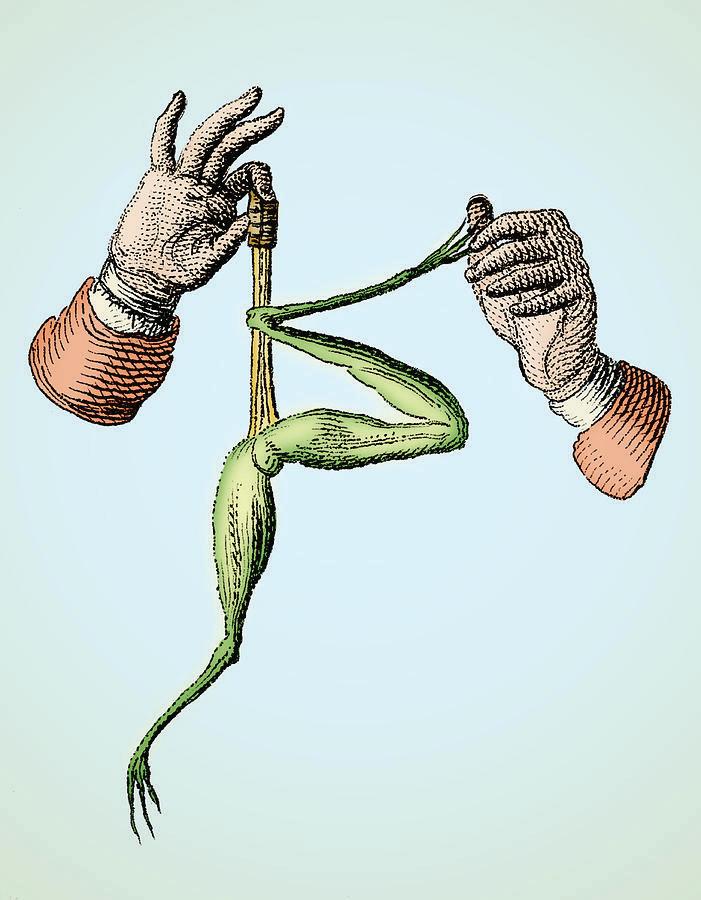
tists noticed the effect that the eastern brown snake’s venom had on blood it had reacted with. During serious car accidents, the most dangerous factor is the loss of blood. After the human body loses 40% of its blood, it begins to shut down, and this can happen within one minute after the accident. The compounds in eastern brown snake venom can completely shut down the body’s de-clotting agents, meaning a spray of the clotting agent from the venom could buy crucial time that someone may not have had without it.
Snake venom has also already been derived to create common medicines. Captopril was the first oral medicine that could prevent blood vessels from tightening, thereby reducing high blood pressure. It also has use cases in treating kidney problems that stem from diabetes, and its creation followed the research and study of venom from a pit viper. Eptifibatide (Integrilin) is another medicine that prevents platelet aggregation, which can often lead to heart attacks, and its properties were based on the study of pygmy rattlesnake venom. While highly dangerous creatures such as snakes may come off as entirely deadly, it is the fatal tool they possess that has already saved countless lives. Since different types of venom from various creatures are so complex, there are likely worlds more to uncover. Further research into this field will likely lead to countless discoveries that will expand the field of medicine and make the world even safer to live in.
BY JOSEPHINE CHOONG, GRAVEYARD MANAGER
Have you heard the ghastly story of Marie Curie? The “mother of modern physics,” whose radioactive legacy left her body buried in a lead-lined coffin? Her research gave the groundwork for treatment in cancer, but the consistent and prolonged exposure came at a deadly cost. Who was she, and what became of her legacy? Read on if you dare.
Our spooky tale begins in 1867 when Marie Curie was born as Marie Skłodowska on November 7 in Warsaw, Poland. She was the youngest of five siblings; however, when her mother died and her father couldn’t support her, she had to work as a governess and tutor. Yet, she always attempted to study in her spare time.
When she was 24, she enrolled at the Sorbonne University in Paris, France. She couldn’t attend her brother’s university, the University of Warsaw, as the Russian government prohibited women from attending university. There, she decided to do her thesis on radiation, which was recently discovered in uranium by Henri Becquerel. Curie found an ore that was more radioactive than could be explained. She and her husband, Pierre, grounded up samples of pitchblende, which had uranium ore, dissolved them in acid, and separated the different elements present. This led to the discovery of polonium, an element more radioactive than uranium. It was named after Curie’s birth country and listed as the atomic number 84.
Later, in 1898, the two found strong evidence for an even more radioactive element: radium. However, they had no sample of it as pitchblende was an expensive material. So, Curie brought it from a factory in Austria, which removed uranium from pitchblende for industrial use. Then, she processed the pitchblende to extract radium on a larger scale.
The secret life of spiders
wasps, roaches, and more.
“I’m sure everyone knows that om, but they also fly, play songs, walk on water, solve puzzles, and ter to the tallest mountain peaks on Earth,” said James O’Hanlon, author of Eight-Legged Wonders: The Surprising Lives of Spiders, which is a book about the remarkable lives of one of the most misunderstood and maligned creatures on the planet: the spider. “This is the first step in your newfound lifelong fascination with spiders.”
Spider fears, both genuine phobias and general disliking, are the most commonly reported fears worldwide. However, they are terribly misunderstood due to widespread misinformation and myths — most spiders are harmless to humans. Although some spiders, like the brown recluse and the black widow, may cause medically dangerous bites, they just like keeping to themselves and feeding on pests until they sense a human as a threat.
“Spiders really have no interest in biting people, unlike a lot of other arthropods like mosquitoes, and ticks, and mites that feed on human blood,” said Catherine Scott, an arachnologist at the University of Toronto. “The only reason a spider would bite you is if you’re crushing it, or sort of otherwise harassing it, and it feels like it’s got no other choice but to try to defend itself.”
Spiders are more than just backyard visitors or unwanted houseguests. They are essential players in natural pest control. By feeding on a variety of insects, spiders help keep insect populations in check, particularly those dangerous to plants and humans like mosquitoes, aphids, flies,
This work was heavy and physically demanding, and involved dangers that the couple didn’t appreciate. However, in 1902, Curie eventually isolated radium and determined its atomic weight to be 225.93.
Curie also championed the utility of scientific research for the public good. She and her husband figured out that radiation could be used to treat tumors because they found that radium destroyed diseased cells faster than healthy cells.
During World War I, she created small, mobile X-rays used to diagnose injuries near the battlefield. They would be further developed and named ‘Petites Curies’ in 1914, which allowed battlefield surgeons to operate and X-ray soldiers more accurately and effectively. Along with her daughter, Curie also would X-ray to locate fractures, bullets, and shrapnel.
In 1903, Pierre, Marie, and Henri Becquerel won the Nobel Prize for physics for their joint but separate work on “radiation phenomena.” Because of this, Curie became the first woman to win a Nobel Prize. Later on, in 1911, she won a second Nobel Prize in Chemistry for creating a means of measuring radioactivity.
Curie died on July 4, 1934, from aplastic anemia, which was caused by her research. Her body was so radioactive that she had to be buried in a lead-lined coffin. This wasn’t known until 1995, when the French government wanted to move the Curies to their national mausoleum, the Panthéon. Later examination of Curie’s body revealed that she was well preserved with only small levels of alpha and beta contamination detected. However, her equipment (furniture, cookbooks, clothes, and laboratory notes) still remains extremely radioactive. To this day, they are stored within lead boxes and will remain radioactive for 1,500 years, a haunting reminder of her legacy.
In particular, cellar spiders are masters of natural pest control. Typically, they reside in basements, garages, and cellars. While you are reading this article, a cellar spider may be performing what scientists call a “dance of death,” in which it places its lanky legs on the edges of another spider’s web, tremble as if it is a trapped “snack”, and waits for the owner of that web to come eat the cellar spider. What happens to that web owner next is what makes cellar spiders the best roommates.
“The cellar spider tosses a silk web over it, wraps it up, and eats it,” stated Dr. Eleanor Spicer Rice, entomologist and writer of Dr. Eleanor’s Book of Common Spiders. “Then, to add insult to injury, the cellar spider moves on into its victim’s web, gobbling down all the creatures that got snagged by the work of the deceased spider.”
Another spider which catches insects and other small prey with its web is one which most of us encountered — the common house spider. They are non-venomous and come in various shades of brown, tan, or gray, blending in with dusty corners.
Fascinatingly, houses are not the only places where spiders are found — they can also be found underwater and on mountains!
Although some spider spe cies spend some time in water, the water spider is the only spi der which spends its entire life underwater, living in a large air bubble during the day and hunt ing at night. In their pond habi tats, they can be recognized by silvery air bubbles trapped in the hairs of their body.
The Himalayan jumping spi der is referred to as Mount Ev erest’s highest living resident. These tough spiders can survive the extreme conditions on Mount
Everest including cold, low oxygen, and high UV radiation. They feed on insects that get blown up the mountain slopes. In a place like Mount Everest, where food is scarce, their low metabolic rate allows them to conserve energy.
In fact, you do not have to climb Mount Everest to find impressive spiders; jumping spiders, in general, are found in a variety of habitats, from your home to the wilderness, and they amaze most people with their intelligence every day! They can visually perceive and remember their surroundings, which gives them an advantage when hunting. They are also able to solve simple problems and learn from experience. They won’t bite you unless they feel threatened by you, so when you encounter them, you can observe their strategic hunting skills from a distance!
“Spiders are a part of our daily lives, whether we know it or not, and whether we like it or not,” said Dr. Spicer Rice. “They’re doing wonderful and weird things all around us. And once you know about it, the world be-

BY CAMRYN WINANT, BAT EDITOR
We all know that phase in life where we’re considered adults but still googling how to cook perfect one-minute rice.
You’re growing up; school is harder, feelings are more complicated, and all you want to do is be a kid again, where the biggest problem in your life is who you’re going to play with at recess. Growing up means it’s time to reinvent yourself while trying to give off the illusion of having yourself put together.
It’s time to find new hobbies, because continuously making origami ninja stars becomes less cute and more off-putting the older you get, new values, because you’re finally free from your parents’ influence, and new company. For most people, and for all of us at Stevens, it means uprooting the whole life you’ve built in your childhood home to live somewhere new. You need to be able to support yourself, like if your complicated metal shower rack with nine different rods breaks, you’re expected to figure out how to fix it. In order to support yourself, you need a job, but don’t let finding a job blind you from also trying to find an internship
and had no luck.
You’re going to have to meet a ton of new people as you move through life, and those people will either be an amazing addition to your life, or they will make you regret all of your actions up until meeting them. You might lose some friends from your past, or it will sure feel like you’re losing them, but you’re also going to make a ton of new friends (and it will be your job to evaluate them and decide if they’re really the kind of people you want to spend the rest of your adult years knowing). School is going to become 10 times harder, which is predictable, but so is just being alive. Life is a lot less forgiving the older you get, and you realize that life doesn’t give extra credit for your mistakes.
It can be exhausting when half your energy goes into pretending you can afford your groceries for that week, and the other half goes into convincing yourself that the piles of rejection emails aren’t personal, and the whole time you’re expected to just hold it all together. While the life of a young adult surely isn’t glamorous to experience, every day that you get through and every appointment you make with
BY PRISHA VAGVALA, ZOMBIE EDITOR
Pumpkin pie, pumpkin spice lattes, pumpkin everything; it’s pumpkin season! I’ve been scrolling through Pinterest all day trying to find the perfect pumpkin carving idea. But what happens after I’ve sculpted my masterpiece and admired it in all its glory? Sadly, it might end up in a landfill, joining the 1.3 billion pounds of pumpkins wasted every year: that’s over 80% of those bought for the holiday. That’s the real horror of Halloween. That realization hit me one spooky night after Halloween. My beautiful constellation pumpkin, painted black, was no longer edible and started to rot from the inside. As I sadly admired my creation one last time, I put on gloves and tossed it into a menacing garbage bag. I couldn’t help but wonder how many other people were throwing out their pumpkins the same way.
That’s why I come to you with ways to use your pumpkin after today is over and the daunting post-Halloween cleanup begins. To start, I recommend not painting your pumpkin; leaving

BY JOSEPHINE CHOONG, GRAVEYARD MANAGER
Candy, one of the greatest joys of Halloween. It’s especially exciting when you return home to pick out all of your favorite candy from your pile of spoils. Unfortunately, I have opinions about a lot of them. So, here’s my tier list of popular Halloween candy, along with explanations for some of them.
S-Tier
using eco-friendly, biodegradable paints instead. Also, carving your pumpkin just a few days before Halloween makes it easier to reuse afterward. Let’s say you left your many pumpkins on the stairs outside or on your dorm windowsill.
At that point, you might not want to eat it since it’s been out for a few days, especially if it’s starting to rot. But, you can still compost it by bringing your food scraps to one of Hoboken’s food waste drop-off sites, like Elysian Park.
One fun way to use your pumpkin is to carve a large circle at the bottom to fit your head, and then carve out eyes, a nose, and a mouth. Ta-da, you’ve got yourself a pumpkin mask, now grab friends and do a pumpkin mask photoshoot!
My favorite way to use a pumpkin is to turn it into delicious baked goods to share with friends or family. You can easily whip up a batch of pumpkin cinnamon bread or a pumpkin pie if your pumpkin is still fresh. If you never carved your pumpkin, it can last up to 12 weeks, which means you can save it for Thanksgiving meals.
If you are a fan of pumpkin
until tender, blending it, and there you have it, pumpkin puree that is multipurpose. I think you can even make pumpkin cocktails using the puree, well, mocktails. As for the pumpkin seeds that many people unfortunately scoop out and throw away, they are super nutritious with protein, unsaturated fatty acids, vitamins, and minerals. You can eat pumpkin seeds without their shells, so please don’t throw them away! Clean them, roast them, and season them, then add them to soups, salads, or even bread.
Last but not least, if your expertise does not lie in the kitchen, that is perfectly fine.
Definitely make a cute jack-o’lantern instead. Just find an inspirational photo, and make it a fun group activity with friends.
It’s perfect for dorm decor, and even if Halloween has passed, it’s okay to keep the spirit going a little while longer. Just remember to dispose of your pumpkins responsibly, since throwing them in landfills causes them to release methane, a greenhouse gas. Instead, try composting or reusing them in creative ways to extend their life and reduce waste. Have a wonderful Halloween, Ducks, and do your part to keep those

I love Lemon Heads because of its smaller size. You can pop it in your mouth for a moment of lemony goodness. It’s a perfect blend of sweet and sour. The same reasoning goes for Nerds, except you get a better variety of flavors. Plus, it brings a hint of tanginess that not many candies have.
A-Tier
I will die on this hill: M&M’s are the best chocolate candy. It has a perfect crunchy shell with a sweet interior. My go-to flavor has to be peanut for its extra crunchiness. The reason that
I lied, I actually don’t have opinions. I put Sour Patch into S-Tier because someone on the assignment tracker said so. I trust that they have good taste. Honestly, I haven’t had a Sour Patch in forever, so I don’t really have a preference.
The best part of candy corn is that it’s seasonal. It’s part of its charm, that candy that only comes once a year. I don’t know why so many people dislike it. It’s slightly chewy with that sugary goodness oozing in, perfect to get into that fall mood.
B-Tier
Swedish Fish are just too sweet for my taste. While I usually enjoy stretchy candy, the sweetness is overpowering. When a candy is stretchy, I want that to be its main focus. I want to enjoy the experience of the texture, not the sugar.
When I eat them, they remind me of chalk and regret. I asked my friend why she loves Smarties, and she just said that they taste good, which wasn’t very helpful in figuring out why people like Smarties. (When I asked her to be more specific, she said that it tasted like cocaine. I hope she was joking.)
C-Tier Strangely enough, I like Hershey Kisses more than Hershey chocolate bars. I know that they likely share the same recipes and ingredients, but I think it’s the shape that makes it more fun to eat.
olate bars when I was younger. Now, they are my least favorite chocolate. Eating one leaves a strange sense of dissatisfaction and yearning.
Unknown
If I had an unknown tier, most of the candies would be here. Shout out to Toostie Rolls, they are in this tier, not because I don’t know about it, but because I genuinely don’t know why I dislike it. I can’t describe its taste, I can’t think of a single time that I tried one, all I remember is that I try to avoid them as much as possible.


BY JOSH BODENSTEIN,
It was a damp, moonless night when the screams echoed from behind the Howe Center. Students passing by swore they saw the flicker of wings—thousands of them—spiraling in the glow of a lone streetlamp. The next morning, the walkway was empty. Only a single shoe remained, coated in the papery husks of crushed lanternflies.
No one ever found out what happened to the student. Some said they transferred. Others whispered that they were taken — carried off by the same swarms that once ruled the Stevens campus.
At the beginning of this year, the air around the UCC Towers buzzed with the constant drone of spotted lanternflies. They clung to tree trunks, light posts, and backpacks, leaving behind sticky trails and spotted shadows. Students stomped them out of habit, a rhythmic crunch echoing across campus
like a war drum. But this semester, they’ve vanished.
Not a single one.
At first, the disappearance felt like a relief. The invaders that had plagued New Jersey for years were finally gone. But the silence that replaced them feels … unnatural. The same spots outside Howe and Babbio where they once gathered now stand still, the air heavy, as if waiting.
So where did they go?
Despite the campus legends, Facilities whaven’t sprayed or cleaned them away. The truth is more complicated — and stranger in its own right. Entomologists across the state have noticed a sudden drop in lanternfly numbers this year, a phenomenon spreading from Hoboken to Hackensack. The likely cause? Nature is fighting back.
After several years of infestation, new fungal pathogens and parasitic wasps—both native species—have begun to target the lanternfly popula -


BY TANYA AVADIA, GHOUL CATCHER
Spooky season is officially here! This means that horror movies, haunted houses, and overall “spooky” things make a comeback. There is a theory that people love this time of year, primarily because they want to test how much they can handle before they are truly scared. Many people find a thrill in being scared, which sounds like a contradiction as fear is a negative emotion. Typically, when you are scared, you tend to hold your breath, your palms get sweaty, and your pulse races. These aren’t pleasant sensations, and yet people are drawn to experiencing this. So why is that, and what draws people to inherently scary things?
tion. These natural predators infect or consume the flies, leaving behind what researchers call “death poses”: wings spread open, frozen mid-flight.
If you’ve seen a lanternfly cling ing upside-down to a brick wall lately, perfectly still, that’s no accident — it’s already dead.
In other words, the invasion collapsed under its own weight. The lanternflies’ numbers grew too high, too fast, until nature corrected itself.
And yet, when night falls, the quiet feels uneasy. The trees along Wittpenn Walk still bear their scars—pitted bark and faint gray residue. Sometimes, when the wind rolls off the Hud son just right, a shadow flits past the lamplight and vanish es into the branches above.
Maybe it’s nothing. Maybe the lanternflies are gone for good.
Or maybe, just maybe, they’re waiting for spring… when the air warms again, and the lights of Stevens flicker like beacons calling them home.

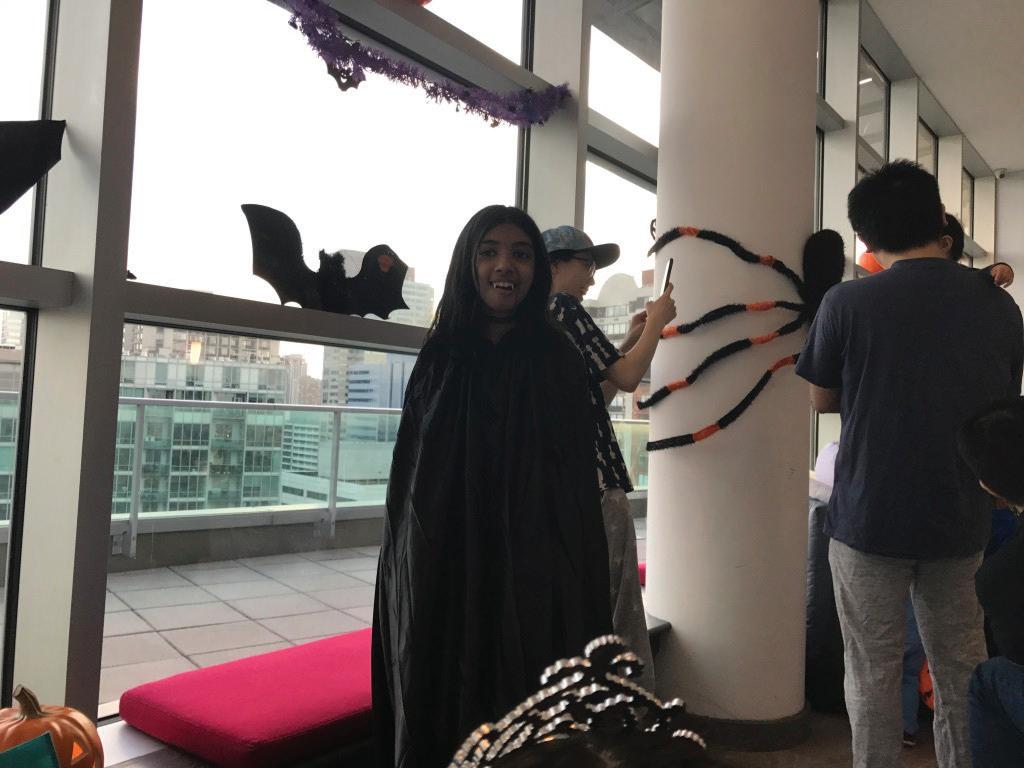
The reason why many individuals seek out these types of experiences is because fear is an emotion that cannot be faked. People genuinely feel fear, and people who are inclined to put themselves through these situations or consume this form of media want to experience this strong and very human emotion. In a world where they know they aren’t in any real danger, humans enjoy walking the fine line between wanting to survive and actual survival. In a way, fear can also be interpreted as a form of surrender, wanting to lose control in a controlled environment. Culturally, this is true across our lives: amusement parks with large roller coasters, sky-diving being a prominent extreme sport, and even the philosophy of breaking the rules just for the thrill. People thrive on the adrenaline rush of doing these things, especially because they know that they aren’t in any real danger.
From a biological perspective, humans need fear. While it inherently keeps us safe, it can also help keep us grounded in a way. Fear is so raw that it humbles us as individuals. It isn’t necessarily a weakness if you are scared, but rather a sign that you feel threatened to the point where all you care about is survival. Once this feeling fades, what is left isn’t exactly relief but rather awe. This awe comes from the fact that you got through it, you felt it, you made it out, and that you are human.
As humans, fear is a primitive emotion, something that we want to escape from or outgrow. Although, from an artistic perspective, fear can also be a very descriptive and deep emotion. Fear can be interpreted as something that can become an experience and even a performance. Imagine watching a scary movie, the lights go out on screen, there is an eerie silence, and all of a sudden, there is a jumpscare. Just thinking about it evokes a powerful sensation that can almost be equated to a performance. The experiences that you have are incredibly raw, and there is no way to fake genuine fear. While these scary experiences—such as haunted houses or horror movies—can be engineered, the feelings people experience are still genuine, which border on our primal instinct to want to survive.


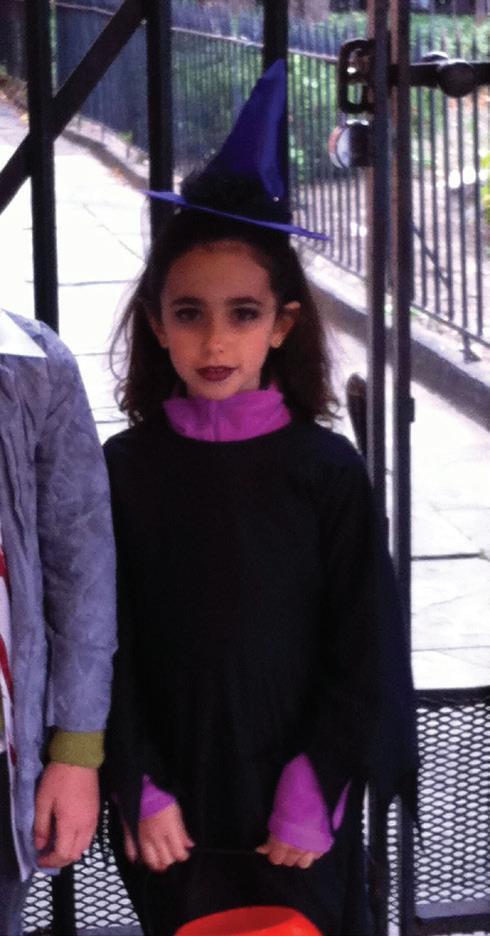
The following anecdote must be read with your face under a flashlight and a spooky voice: It was a dark and stormy Thursday night. The lights were dimmed outside of the Stute Office, and there was no soul in sight. Crouched in a corner with her feet tucked under her is Jiya, staring at the illuminated screen in front of her. She has sat in a singular position for several hours, back hunched over, eyes becoming dreary, hoping for the work to be submitted in time. Her fingers brush over the keys quickly in a repetitive manner, and before she knows it, the clock has rung 6 p.m. Jiya has never known what happens if she does not make the 6 p.m. printer deadline: will the newspaper not come out, will she be charged more money, or will her entire laptop explode? In fear for her life, she submits each page of the newspaper and quickly shuts her laptop in a haze. With no actual inclination of the submission going through, Jiya sits on edge
until Friday morning, rocking herself back and forth, praying for a miracle, hoping that the newspaper will appear on the Howe steps Friday morning. But Friday morning rolls around, and the newspaper never appears. In the spirit of Halloween, I thought we could talk about our fears. As this is a Stute Editorial, my biggest Stute fear is the newspaper never showing up post-submission! If you have ever been Editor-in-Chief, you understand this fear well!
As a part of my job, I review each page that my Layout Editor submits, as well as completing the news pages myself each week. I purposefully make my class schedules on Wednesdays and Thursdays lighter so I can spend my time in meetings and help during production. At 12:30 p.m. on Thursdays, I sit down to review all 10-12 pages, confirm accuracy, and I do not leave the office before 6 p.m. There are a decent number of weeks I get lucky and can leave around 4:30 p.m., but especial-

ly recently, and with how hectic my schedule has been, I have been planted in that office for six hours every week.
I have been told that if I miss my 6 p.m. deadline, I will be called as a reminder to submit. However, I have not let this happen yet. I have limited contact with my printer, and although they seem like lovely people, I do not need to be spam-called to submit my newspaper on time. I also don’t need to be in that office longer than I already am!
But when I submit the files, there is no confetti or “congrats, you submitted,” quite literally nothing happens. There is zero indication that my printer has received the files, and they will arrive by the next day. I have to send a prayer that all of The Stute’s hard work will show up on the Howe Center’s doorsteps.
I have never had this happen to me, and it would be my worst nightmare if it did. I guess I would have to call my printer and sort it out, but the idea of
Eve. As each holiday passes, the days will get colder, the sun will set earlier, the rain will change to snow, and the leaves will disappear as winter begins.
Now as life is slowly sucked from the landscape, humanity only increases. Halloween is a night of spectacle — little kids run around in their homemade costumes, young adults celebrate at parties, and the older generations hand out candy while aggressively calling in noise complaints. After Halloween comes Thanksgiving. A time of year when we start to reconnect with our families, both the given and chosen. At our Thanksgiving dinners, we take a moment and think about what we have to be grateful for. We give thanks for all we have and all we have been given. Next comes Christmas. For those who are religious in the Christian faith, it is a time to celebrate the birth of Jesus Christ. For those who do not subscribe to this reli-
gion, it is a time to spend with family and friends. Give gifts and enjoy the cold weather. Watch movies, bake cookies, and enjoy the time off from work or school. Finally, New Year’s Eve. The final day of the year is used for celebrating the previous 364 days. People gather with their loved ones and celebrate a combination of the previous three holidays. They throw parties, give thanks, and spend time with those they love. And when the clock finally strikes midnight, the holiday season concludes, giving way to the new year. These upcoming 61 days are hands down the most joyful, emotional, and stressful of the entire year. Although each holiday is based in joy, the side effects of this much happiness are quickly revealed. It starts on the day after Halloween, where you have to reckon with what you remember from the night before. Then comes Thanksgiving, when seeing relatives can bring about some unresolved conflicts, not to mention the stress of the person hosting the meal. With Christmas comes the memories of those we have lost and the longing that we could spend one more holiday with them. Finally, New Year’s Eve arrives, forcing a recollection of the last year and a reflection of what you failed to accomplish. With every holiday, there are ups and downs but having four in a row can feel like suckerpunch after suckerpunch.
Fear not, I have some
advice for anyone dread ing the remainder of this year:
First, remember to breathe. These coming days will be stressful, but you’ve gotten through it before.
Second, make time for yourself. I know this can seem like a tall order giv en all the chaos that tends to unfold but, try it. Either when you first wake up or are about to go to sleep, take a moment for your self, just to exist for a min ute.
having the deal with that whole mess sends shivers down my spine.
I spend my Friday morning in a slight frenzy, so if you see me rushing down Wittpenn Walk, you know exactly what I am do ing. This random fear is what keeps me going. The newspa per is not just a newspaper, but an accumulation of all the hard work my team and I have done over the course of a week and a half. I chase after the relief I feel when I see the newspaper arrive on Friday morning, and the sense of accomplishment that comes with it.
Fears are not meant to stop us from pursuing what we love; they are encouragement to make sure you do everything you need to do correctly. It is my fear of the newspaper not coming out that motivates me to follow every deadline, even though I know the consequenc es are not as severe.
On this Halloween night, don’t let your fears get in the way of having a great time and

Third, think about the ones you love the most. Now this can be your sibling, parent, partner, or even just a friend but, take the time over the next two months to celebrate with who you want. Whether it is your given family or your chosen family, make time to enjoy the presents of people you want to be around. Don’t just be a fly on the wall at parties and gatherings, laugh, cry, and reminisce with the ones you love.
So, the holiday season has begun, and although it can become a very stressful time for everyone, it can also be the best time of the year. So brace yourself.



You can’t. There is no way around, that’s why it’s a canon event. In all seriousness, canon events make us who we are. It’s the social exposure therapy that’s necessary for becoming an adult. Losing friends over dining hall disagreements and library study group conflicts begins balanced and experienced adults. We go into first experiences as malleable and innocent hopefuls and calcify into bruised, yet brighter humans.
Canon event: a significant, often painful or formative experience that is seen as inevitable and necessary for a person’s growth. Think of this as something we all eventually go through. For example, finding the perfect, most fun friend group ever the first two weeks of college, then by October 31, the friend group totally breaks up. Canon event. Or having an onagain off-again relationship with an emotionally unavailable person that your brain convinces you to think is the one all to see it end after three days. Canon event. Or your first real heartbreak…the realest canon event of them all. Something about the fall, maybe it’s the “cuffing season” pressure, makes these canon events happen more often. I challenge you to ask a couple of friends when they’ve experienced these moments, my inductive reasoning says autumn.
Now that we know what a canon event is, let’s move on to how to avoid them. You don’t.
BY ISABELLA GABAY
My Halloween canon events have been extremely formative. Each year, it’s something different. My first year of college, my canon event was the extreme social pressure to find the best spooky night activity. When you’re a first year in college, discovering the social scene is not for the weak. The pressure is especially strong for first years since your social circles are still developing and shaky. The canon event of finding where the parties are and what costume to wear is a unique experience that has always existed for first years in college.
My second year was the infamous friend group breakup. People change and grow apart. This “change” occurred on Halloween! This was a true canon event that people have warned me about. My elders passed down the notion that every friend group experiences a breakup and it’s never really pretty. Lucky for me, I made it out alive and am still friends with everyone from that group! Last year, I experienced the most confusing, fun, silly, and crazy
canon event. Duh duh duhhhhhh. Pro tip: if you ever want to tell someone how you feel about them, definitely don’t do it on Halloween, especially when all the makeup and costume chaos covers up who you really are. Save yourself from useless heartache and just grab a candy bar instead; avoid these conversations even if they’re at the same party as you. I’ll save you the hysterics, but it was an exciting time … I guess. Halloween weekend last year happened in a glimpse and was never to be seen again. Canon event. Experiences like this one teach us a lot about ourselves. When we’re young and impressionable, we’re susceptible to questionable people and negative energy. It’s like we turn 20 and everything we’ve known and loved about ourselves fly out the window; we let everything someone else thinks about us consume us. Like I said before, these moments are formative and shape us into who we are. We need these moments.
My advice to you, at my old age (21) and having canon upon canon, is to just enjoy the ride. Don’t fight it. Let yourself have fun and do things that your older self might cringe at. Be with your friends and do group costumes. Start talking to a love interest on Halloween night and blame it on the candy corn! Just be yourself, even if you don’t know who that is just yet. Canon events can be painful and uncomfortable, but they’re thrilling and required for growth. Happy Halloween, I wish you all the best!


placed in the bunker as a child. Although the story takes place nearly two decades after they became trapped, the novel is written through the perspective of the narrator as an older woman recounting her life story. The women are trapped in this bunker, with only each other for company. Captives for reasons unknown, the novel follows their story, as the narrator describes their escape and exploration of the mysterious world above them that may not be what they expected.
The novel is an exploration of humanity and what actually defines being human when you are removed from soci-

edible art. These aren’t just snacks — they’re expressions of personality, humor, and sometimes, a little bit of chaos. Whether it’s a vampire-themed mocktail, cupcakes topped with candy eyeballs, or “bloody” raspberry sauce on desserts, Halloween cuisine gives everyone permission to play with their food again.
mon, nutmeg, and sugar. Pumpkin flavor reigns supreme, and even the most ordinary snacks get a spooky makeover. From pumpkin spice lattes to candy corn controversies, Halloween is a celebration that extends far beyond the plate.
At its core, Halloween food is more than just themed treats — it’s a reflection of culture, nostalgia, and creativity. Think back to your childhood trick-or-treat bag: a jumble of sweets that somehow told a story of where you lived, what brands dominated the season, and which neighbor always gave out the “good” chocolate. Candy, in its playful way, becomes a shared language — one that unites strangers under porch lights and transforms a chilly autumn night into a community ritual.
But Halloween food has evolved. It’s no longer just about what we eat, but how we make it. On social media, haunted charcuterie boards and ghost-shaped pancakes take over feeds, turning cooking into a kind of
The pumpkin spice latte, once a simple seasonal drink, has evolved into a lifestyle that signals the unofficial start of fall. Beyond coffee, pumpkin flavor has infiltrated cookies, protein shakes, cereals, and even hummus. Some call it overhyped, while others see it as comfort in a cup. Either way, it’s proof that flavor trends can shape entire seasons and influence how we celebrate. Halloween foods aren’t just sweet; savory eats have their own eerie charm. Think “mummy” pigs in a blanket, roasted vegetable “monster fingers,” or black bean and corn chili served in mini pumpkin bowls. These dishes bring creativity to dinner plates and allow anyone hosting a Halloween gathering to join the fun — even those who aren’t sugar enthusiasts. Food becomes interactive and playful, letting cooks and eaters alike immerse themselves in the season’s spooky spirit.
Yet amid the sugary chaos and creative plating, Halloween food carries a deeper meaning. It’s about connection — gathering with friends to bake pumpkin bread, sharing caramel apples at fall festivals, or simply swapping candy after
ety. The narrator is the only character who does not remember or know life prior to being imprisoned, so the exploration of humanity is told through a character who has never actually lived life outside of her cage. This brings a nuanced and fresh perspective on life as the narrator has nothing to relate to or call back on. The novel explores heavy themes of community, solitude, and what it means to be human when you lose everything that you know
The book is written very slowly as the narrator gradually unfolds her life throughout her writings. She narrates her experiences trapped within
trick-or-treating. Even the smallest traditions — like roasting pumpkin seeds, making caramel popcorn, or sipping hot cocoa af ter a night out — remind us that food can anchor us in time, marking the rhythm of the year.
At Stevens, surround ed by busy schedules, late-night study sessions, and club commitments, celebrating Halloween through food can be its own form of self-care. Maybe it’s baking some thing festive in your residence hall kitchen, decorating store-bought cookies with friends, or just grabbing a pump kin-flavored drink be tween classes. These lit tle rituals remind us that food is more than sus tenance — it’s emotion, creativity, and memory wrapped in one.
the bunker, watched by guards outside of the cage, but unable to speak to anyone other than the other women. You read as she explores her adolescence and adulthood experiences in a way that completely differs from the accounts of the older women trapped, who do have their memories of life before the cage. The title I Who Have Never Known Men refers to the fact that the narrator has never known any man throughout her life. She grew up in the bunker in complete isolation from an entire world and the experiences that come with it. The novel explores themes of womanhood through the eyes of

TAnd there’s also a growing trend of pairing Halloween with technology and innovation. From app-based pumpkin carving guides to virtual “spooky cooking classes,” food has become an interactive, shareable experience. For student communities and tech enthusiasts alike, Halloween food isn’t just something to eat — it’s something to experience, capture, and share.
So this spooky season, let your taste buds join the celebration. Try something new, bake something bold, or simply savor the magic in your favorite candy bar. Because Halloween, at its sweetest and spookiest, isn’t just about what’s on your plate — it’s about the memories, creativity, and community that live *beyond* it.

a woman who has never left a cage. I Who Have Never Known Men is a translated novel, originally written in French, and it does read like a translated novel. That is, the prose may seem stilted or monotonous after a while. Even though it does not detract from the overall experience, it is something to note, especially if slower writing is something that bothers you. However, it is a very successful dystopian novel that leaves you with questions quicker than you can find answers. I highly recommend this novel for someone who wants to explore more translated literature and more contemporary dystopian novels. The book itself is fairly short, just under 200 pages, and while the ambiguous storytelling may seem difficult to follow, the novel itself is worth reading.
the vampires.

Jim Crow-era, the film follows twins Smoke and Stack (both played by Micheal B. Jordan) as they return home to open a juke joint, only to find a vampiric evil awaiting.
The film opens with Sammie (played by Miles Caton) riding up to a church in bloodied clothes, clutching his broken guitar as he interrupts his father’s sermon. Christianity is an extremely prevalent theme throughout the film. It is seen as a source of hope but also a repressing tool. The church offers Sammie sanctuary, but also pushes him into a corner. He is repeatedly told to give up music because it was viewed as a sinful or even demonic act. The film complicates the familiar trope of Christianity being a weapon of evil. The vampires in the film recite the Lord’s prayer, suggesting faith without conviction is powerless. Only holy water and sincere prayer
Music, specifically the blues, plays a central part in this movie. Sammie’s guitar and his magical ability of music serve as powerful symbols of unity and destruction. In one of the film’s most memorable scenes, Sammie’s music summons a range of spectral musicians from different generations and genres (everything from rap to gospel), forming an ancestral gathering of music. However, the power of Sammie’s music attracts the vampires. Remmick (played by Jack O’Connell) is drawn to the juke joint not only for the blood, but to connect with his lost ones. This dynamic serves as a metaphor for the exploitation of Black artistry as they are forced to live in a society where their culture is stolen while they are denied ownership and credit.
The film’s central location, the sawmill bought by the Smokestack twins for the juke joint, carries a dark history of its own. It was once a killing floor where the local KKK executed many African Americans. This venue, haunted by the past, is built up and transformed into the juke joint imagined by the twins, serving as a place of community and music.
Ryan Coogler, director of the film, not only incorporates horror elements but also expertly weaves history into the film. The segregated towns, racist landowners, and threat of the KKK looms over the characters in the background. When Smoke goes to
from Grace and Bo Chow, the audience can clearly see the stark difference between the two stores owned by the Chows. The store for white customers is brighter, filled with branded goods, and overall giving a sense of comfort. The store for the Black customers, on the other hand, is more practical and stripped down, focused more on necessity than luxury. The almost passing detail reflects the reality that Chinese immigrants often served black customers when the white-owned establishments would not.
Visually, Sinners is extraordinarily brilliant. The expansive wide-frame visuals ground the film in its historical setting of the 1930s and 1940s. The use of IMAX 70mm immerses the audience into the film unlike any other. Even the color of the vampire’s eyes tell a story: red for the leader, Remmick, and purple for Stack—a mix of blue and red, the colors worn primarily by the twins— symbolizing his loyalty to his brother. The use of long, sweeping takes evoke history, while close-ups reveal the inner emotions of the characters.
Sinners is a masterful film that seamlessly blends horror with the intricate elements of the haunting history. The rich use of myth and metaphor, the film celebrates Black culture but also its exploitation. Every frame is deliberate and meaningful. Truthfully, 650 words would not do justice to the film’s scope, the emotional resonance, and the skillfully crafted cinematic elements it
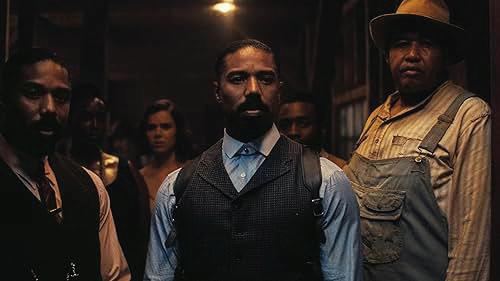

cape from the weight of classes and work for a night. Halloween is a chance to disappear into an alter ego, to become someone entirely different, and to take a small break from the exhaustion of being ourselves all the time. But it got me thinking: How did this holiday emerge, and why do we all love it so much?
We can trace Halloween back to the Celtic New Year’s festival of Samhain (pronounced “sow-in”), meaning “summer’s end.” It was a pagan celebration marking the end of the harvest and the start of the darker season. The Celts believed

that during this time, the veil between the worlds of the living and the dead grew thin, and unwanted spirits could cross over. To protect themselves, people darkened their faces with ashes to hide from mischievous spirits but revealed themselves to the souls of loved ones who had passed. Over time, this practice evolved into wearing masks — and eventually, full costumes.
The ancient Celts perceived a threat in the blurring of life and death, but instead of running from it, they chose to ritualize it. To them, Samhain was a time for spirits to be acknowl
aspects of life, Mary Shelley’s exposé of human nature impacted all facets of fashion, but in particular, Alessandro Michele’s collection for Gucci for what it means to be human. Michele’s work at Gucci was different from the others that came before him. Similarly to Dr. Frankenstein, they were visionaries in their own respects, even if others may have ostracized their ideas. Michele saw this vision of humanness and mortality in his shows and his designs. He saw that humans draw themselves by those around them and would go on to say,“We are all Dr. Frankensteins of our lives.”
that created the monster in the books—is even a term in fashion referring to a garment that is put together with different patterns, fabrics, cutting, and sewing techniques often utilized by design er brands like Sacai, Jun ya Watanabe, McQueen, and Gucci, among oth ers. In particular, Gucci’s autumn/winter 2018 col lection under the creative direction by Alessandro Michele takes a deeper look into how humans are their own Dr. Franken stein through construct ing their identities with the powers of tech, Holly wood, and social media. This is similar to Shel ley’s vision of the crea ture forming his person ality and mind by those around him, and how society treats him. Her writing exposes human nature to be messy and not quite as accepting of those who are different from the status quo, sim ilar to how Michele ran Gucci. Although fashion takes inspiration from all
Those are the words that he used when describing his 2018 collection, which, in essence, is the human nature that Shelley was trying to portray in her writing, drawing inspiration from a multitude of ideas and interactions that shape your personality. The creature
produced an “infinity of new images and feelings, that sometimes raised [him] to ecstasy, [but also sunk him] into the low est dejection” (Shelley 2, VII). Michele’s 2018 collection speaks on the truth about human nature as influence can invoke a positive feeling or also create dejections like how the creature reduced himself to the animals. In a way, originality is really quite rare in the fact that a population is undergoing self-regeneration through its surroundings.
The collection con sisted of clashing lay ers, sweeping skirts, and avant-garde designs. Additionally, it drew inspiration from how bodies are formed, interpreted, and potentially remade, which would explain why a model was walking around with a head — a quintessential Gucci motif. Both Gucci and Frankenstein to this day are a mash-up of a bunch of different visions that somehow work
edged, and by doing so, those spirits could protect rather than harm. There was beauty in this balance: a recognition that life and death, joy and fear, aren’t opposites but companions, and that we might not be able to have one without the other. This confrontation could be frightening, but by disguising themselves, they could face their fears with a barrier between their true selves and their masked selves. Fear became not something to suppress but something to play with — a paradox that turned anxiety into celebration. These

perstition; they were acts of meaning-making in a world full of uncertainty. The Celts found comfort in ritual, as well as a way to face the unknown together. Psychologically, we do the same thing today. We use Halloween to confront fear and mortality, but we do it through laughter and make-believe. As college students, it’s also a time to blur the lines of social norms, to experiment with identity, and to show sides of ourselves that might otherwise stay hidden. Like the Celts, our disguises can bring forth a strange kind of honesty; by pretending, we can express what might have been too vulnerable to show in plain sight. When we celebrate together, fear can turn into community. Perhaps that’s why Halloween, despite being thousands of years old, still endures. It began as a way to make peace with death, and it remains a ritual to make peace with the parts of life that scare us the most. Whether it’s the stress of the semester or the fear of being judged, Halloween gives us a creative way to confront it all — to laugh, connect, and remember that in the dark, there sometimes lies the most room for joy.
weigh heavily on your mind and pop up at every given corner. I did not, however, expect it to be this bad. Across campus, you can tell when midterm season rolls around: a lot less people enjoying themselves outside, a lot less available spots in the library, and an overall disappearance in the student
find a seat at the library, and I see people outside. Whether it be a few people just going out to play lacrosse or a group of friends testing out a minibike, life is coming back to campus.
BY JEYLAN JUBRAN ‘27
Forget haunted hous es and horror movies—the scariest thing I deal with every month doesn’t come with fake blood; it’s the real thing. per about them like they’re cursed, but for many of us, they’re the closest thing to a real-life horror story.

er is pompom shaped, typically ranging in color from red, orange, yellow, or a blend of them all. They are edible and have been used to aid respiratory diseases and digestive problems. In cultural applications, they are used in Day of the Dead celebrations to guide lost loved ones to their altars, which are filled with treats and pictures. In the Victorian Language of Flowers, Marigolds symbolize a host of things, one being resilience.
Midterm season kills. I had always heard and knew that it was going to be difficult, as exams
We’re still here, I know we are, but UCC seems to lack its constant chatter, Schafer Lawn lacks a spikeball game, and everyone seems tired. Midterm season brings a lot of trials to the student body. Slowly but surely, you see a disheartened air fall on the most chipper of us all. I slowly watched as people who would rather be caught dead than studying alone on a Friday night hole themselves up in their room for an entire weekend as they try to complete all their work.
The gloomy feeling is only softened by the impending joy of Halloween. It acts as a marker for a “we made it” moment, where it feels like you can finally breathe fresh air again. It’s a point where you can reflect and realize that you made it through.
As midterms are slowly winding down, I’ve started seeing people more. I no longer have to fight to
The resilience of Stevens students is apparent in their hardworking nature. We are committed to our studies and are willing to do whatever it takes to get the grade we want. If you need an example of that, simply look at our class schedules and the insane amount of credits per semester. We work hard, and sometimes it can make us lose ourselves.
To keep us going, we have to make a path through ourselves. Much like a trail of marigolds on Dia De Los Muertos, we have these joyous moments meant to guide us back to ourselves outside of the student. Whether it be painting pumpkins with some friends at Fall Fest, treating yourself to some good food, or a movie night with those closest to you, we have these moments that keep us going and propel us through the hard times. So, whatever your Halloweekend plans are, make sure you make some time for yourself and remember to have fun.

er know when it will start or stop, and a system that whispers, “Just deal with it.” Women’s health is still treated like a ghost story, whispered about, dismissed, and underfunded. And until we talk openly, treat it with the depth it deserves, and actually fund the research to help us — you bet the fear stays. The good news? Talking about it makes it less terrifying. Periods aren’t monsters — silence is. HER
To put this horror into perspective, Polycystic ovary syndrome (PCOS) affects an estimated 6-13% of
tors, easier than digging into root causes, while the actual triggers of our pain stay ignored. Those aren’t just statistics, they’re my reality. Unlike a scary movie, this isn’t fiction, it’s my body.
I don’t just have cramps,
out. It’s not just the cramps. It’s the unpredictability, the exhaustion, the emotional turbulence. PCOS messes with more than your period — it rattles your hormones, energy, fertility, and sense of self. And here’s where it
gets darker; the healthcare system isn’t much better. Studies show that many with PCOS feel dismissed, misunderstood, and underserved by doctors. We’re treated like ticking symptom machines, not scared humans needing answers. Worse still, research on PCOS is decades behind. Though things are improving, studies remain limited and funding is scarce, especially in this political climate. In one compari-
son, PCOS receives far less NIH funding than diseases with similar prevalence and impact. Obstetrics and gynecology research overall struggles with transparency too, with only 10% of trials reporting data availability and a mere 6% preregistering their research. So yeah, Halloween is scary—but for me, the real horror arrives once a month. It’s cramps that feel like monsters clawing from the inside, a cycle you nev-

Michelle Elias Flores ‘26
“Not having a condom.”


By Isabelle Villanueva and Rachel Choi



Across:
4. To frighten
7. Extraterrestrial
8. Holds ashes of the dead
9. What a ghost says
Down:
“What’s the scariest thing on this campus?”

“Each and everyone of my

1. The country you’re in (probably)
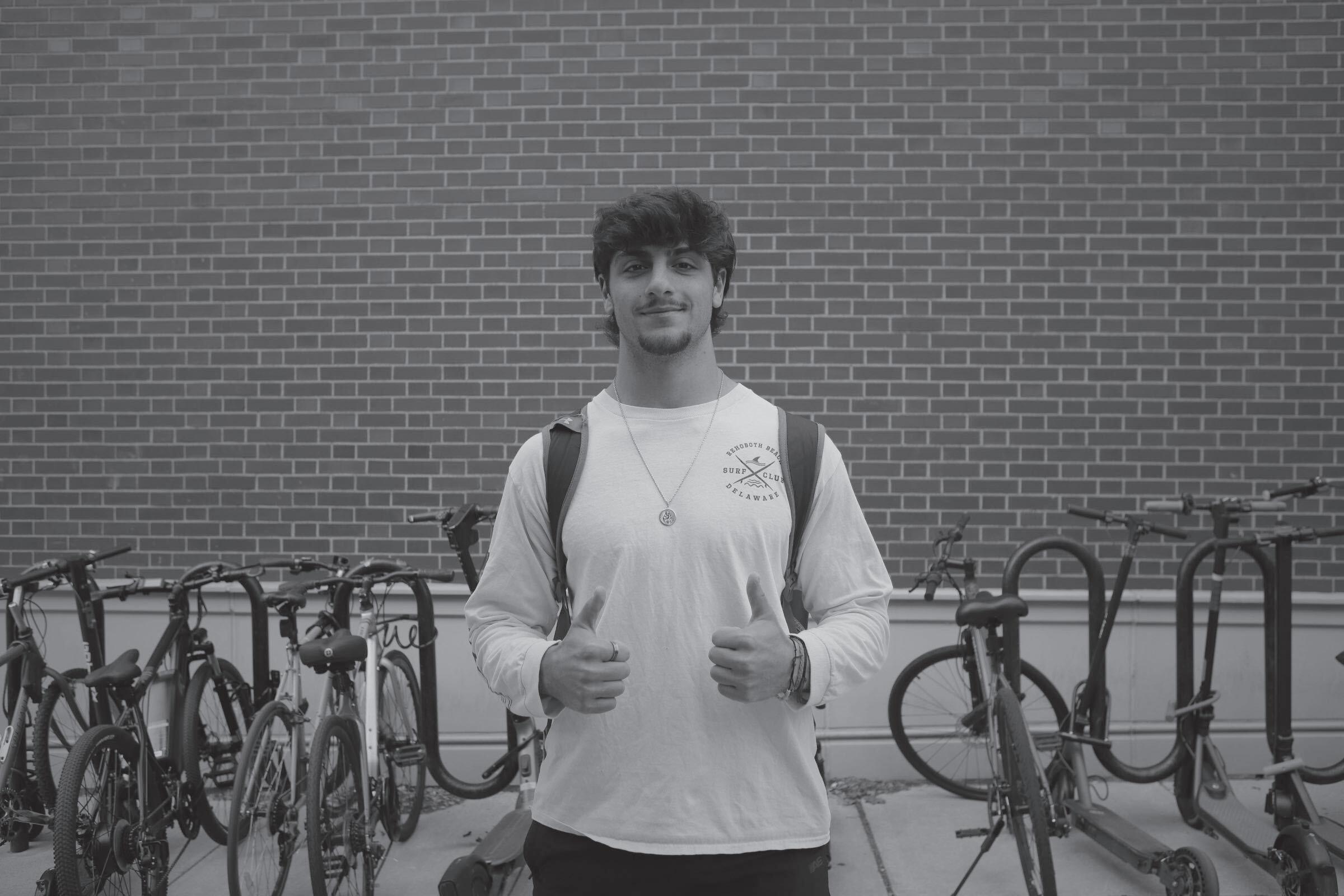
2. Capital of a country with mummies
3. Costume to pair with Barbie
5. A blunt weapon
6. The third most populous city in Nevada
Hidden Links
Inspired by the British game show Only Connect, the goal of this puzzle is to find the hidden connection between four seemingly abstract clues. Each answer will use trivia, wordplay, logic, or some combination thereof. The solution is always more specific than “nouns”, “places”, etc. What do the following have in common?
Jason Michael Freddy Chucky
Cane Bar Corn Apple
Shelly Stoker Irving King
*Puzzle instructions by Stephen Pachucki
Difficulty: Medium

The following list has been translated using a basic spooky substitution cipher. For example, if ◈ represents T in one word/phrase, it will represent T in all the words/phrases in the list. No letter maps to itself. Hint: start guessing things in the category and see if any of the letter patterns match up.
*Puzzle instructions by Stephen Pachucki
Chain Reaction
Each of the six clues on the right leads to a two-word phrase or compound word. Insert each answer into two of the boxes on the right. At the end, you will have an interlocking chain of six phrases.
*Puzzle instructions by Stephen Pachucki
ANSWERS
Clues: 1-2. Building associated with Halloween 2-3. Festive event for this season. Sometimes including costumes
3-4. Activity usually done during the previous clue
4-5. Evening of trivia or board games
5-6. Helpful tool for people scared of the dark
